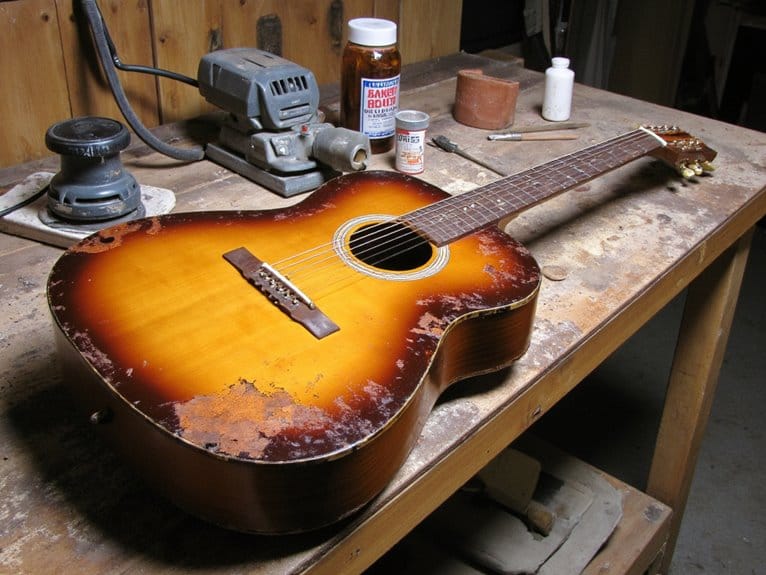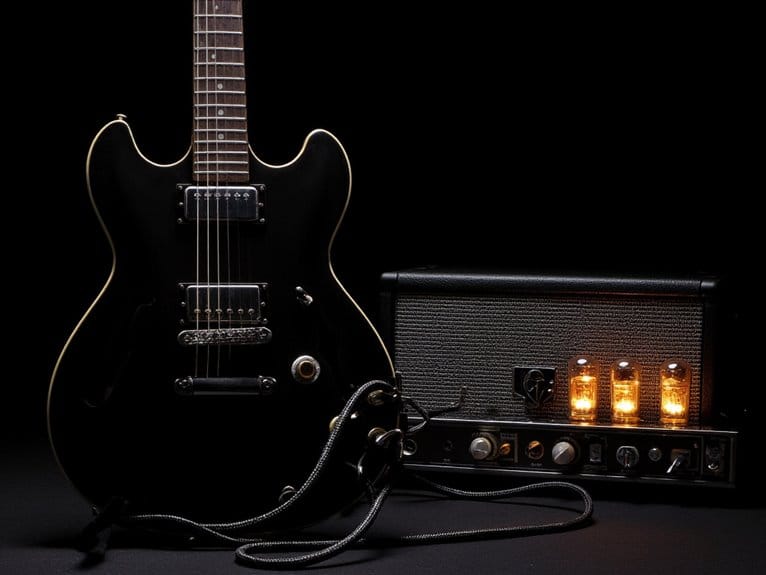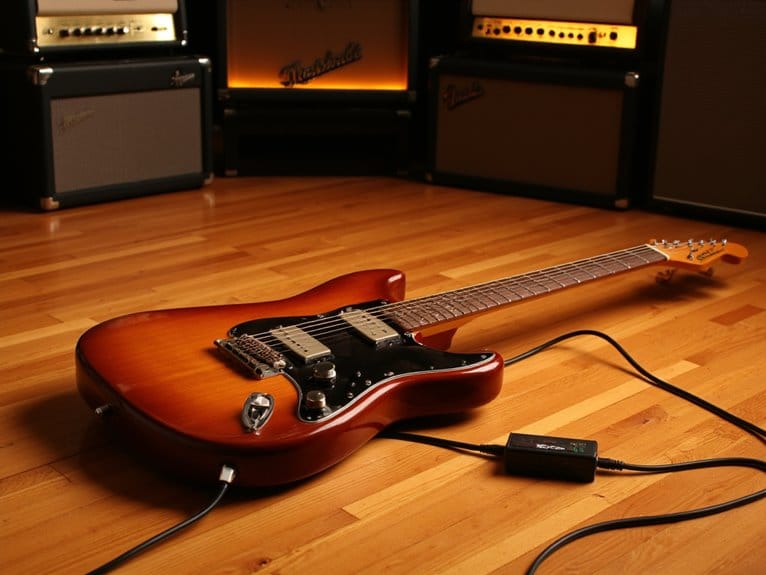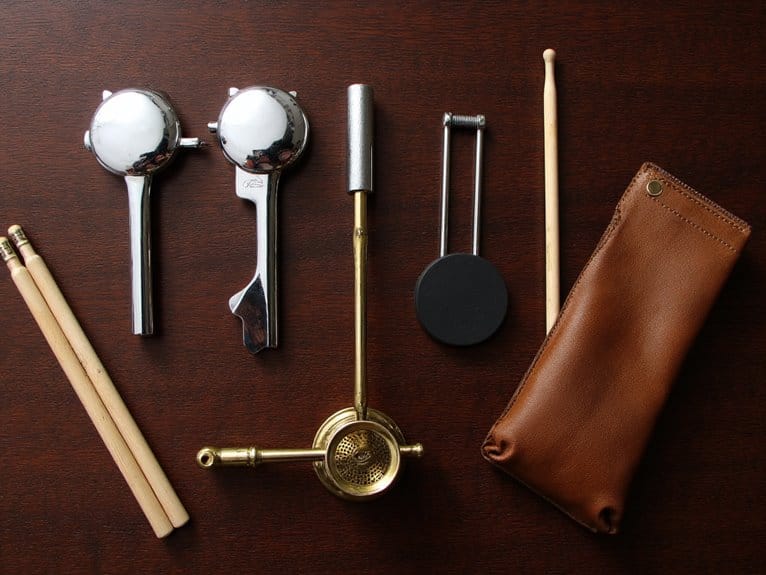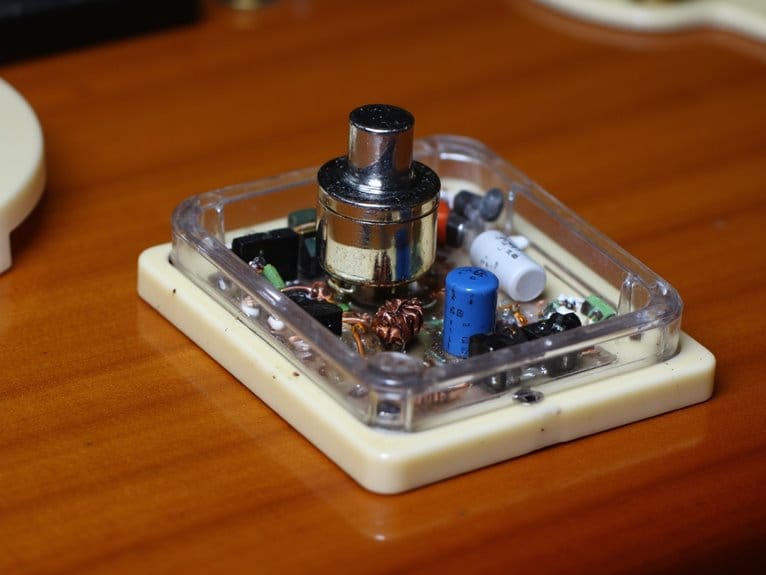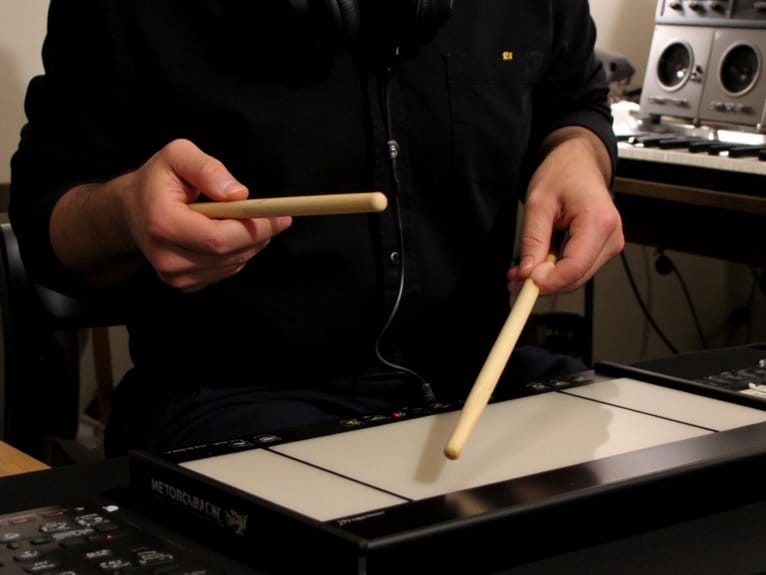Vintage Guitar Restoration: What to Do and What to Avoid
When restoring vintage guitars, you’ll want to start with thorough documentation and photographs before touching anything, since one wrong move can destroy thousands in value. Use gentle cleaning techniques with vintage-specific polish and microfiber cloths, avoiding abrasive materials like Scotch-Brite that’ll damage delicate nitrocellulose finishes. Never attempt DIY neck resets, refinish original lacquer, or replace functional hardware just for cosmetic reasons, as authentic patina considerably enhances worth. Proper assessment separates preservation needs from unnecessary modifications that collectors avoid.
We are supported by our audience. When you purchase through links on our site, we may earn an affiliate commission, at no extra cost for you. Learn more.
Notable Insights
- Document every crack, dent, and hardware issue with detailed photographs before beginning any restoration work.
- Use vintage-specific cleaners and soft microfiber cloths; avoid abrasive materials like Scotch-Brite on delicate finishes.
- Never attempt DIY neck resets, refinishing, or drilling new holes without proper professional experience.
- Preserve original patina and components even if worn, as they significantly enhance the guitar’s historical value.
- Store instruments in protective cases with proper temperature and humidity control to prevent future damage.
Proper Assessment and Documentation Before Starting Your Restoration
When I first started restoring vintage guitars fifteen years ago, I learned the hard way that rushing into a project without proper assessment is like performing surgery blindfolded-you’re guaranteed to cause more damage than you fix.
Your condition evaluation must be methodical, documenting every crack, dent, and hardware issue with detailed photographs from multiple angles. I’ve seen countless collectors destroy valuable instruments because they skipped this essential step, missing hairline fractures or original finishes that seemed damaged but were actually authentic patina.
Skipping thorough documentation is the fastest way to turn a restoration project into an expensive disaster.
Before touching anything, establish clear restoration goals-whether you’re pursuing museum-quality preservation or functional playability. Just as with audio equipment, proper storage in protective cases prevents damage and extends the instrument’s longevity.
Test all electronics, measure fret wear, and record serial numbers. This documentation becomes your roadmap, preventing irreversible mistakes that’ll haunt you later. When documenting vintage instruments with electronic pickups, ensure your audio interface supports the proper input impedance to accurately capture the guitar’s true sonic characteristics during testing.
Safe Cleaning Techniques That Preserve Value and Character
Nothing will destroy a vintage guitar’s value faster than aggressive cleaning with the wrong products, and I’ve watched collectors lose thousands of dollars because they grabbed whatever bottle was handy instead of investing in proper materials. Gentle cleaning starts with understanding that vintage finishes, especially nitrocellulose, require specialized preservation techniques that protect rather than compromise their integrity.
| Cleaning Materials | Application Method |
|---|---|
| Napa cleaner or vintage-specific polish | Apply with damp, wrung-out cloth |
| Soft cotton balls or microfiber | Gentle wiping, never aggressive rubbing |
| Lemon oil for fretboards | Sparingly applied, excess removed immediately |
You’ll want to buff surfaces dry after cleaning, avoid saturating wood or finish, and restrict products from cracked nitro areas where staining occurs.
Critical Mistakes That Can Destroy Your Guitar’s Worth
Beyond proper cleaning methods lies a minefield of restoration pitfalls that can instantly transform a valuable vintage instrument into an expensive lesson in what not to do.
I’ve witnessed countless collectors make decisions that permanently damaged their guitars’ worth in ways they never anticipated. Using abrasive materials like Scotch-Brite on delicate finishes, attempting DIY neck resets without proper experience, or refinishing guitars that simply needed gentle preservation strategies can slash value by thousands.
I’ve seen owners drill new tuner holes, strip original lacquer, or replace perfectly functional hardware because it looked worn.
These restoration pitfalls destroy authenticity faster than you’d imagine, turning collectible instruments into modified guitars that serious buyers won’t touch.
On a final note
Remember, you’re not just fixing an instrument-you’re preserving musical history. I’ve seen countless vintage guitars transformed from neglected relics into stage-worthy instruments through careful, methodical restoration work. Don’t rush the process, document everything thoroughly, and when in doubt, consult experienced professionals who understand the delicate balance between restoration and preservation. Your patience today determines whether your guitar retains its value tomorrow.

